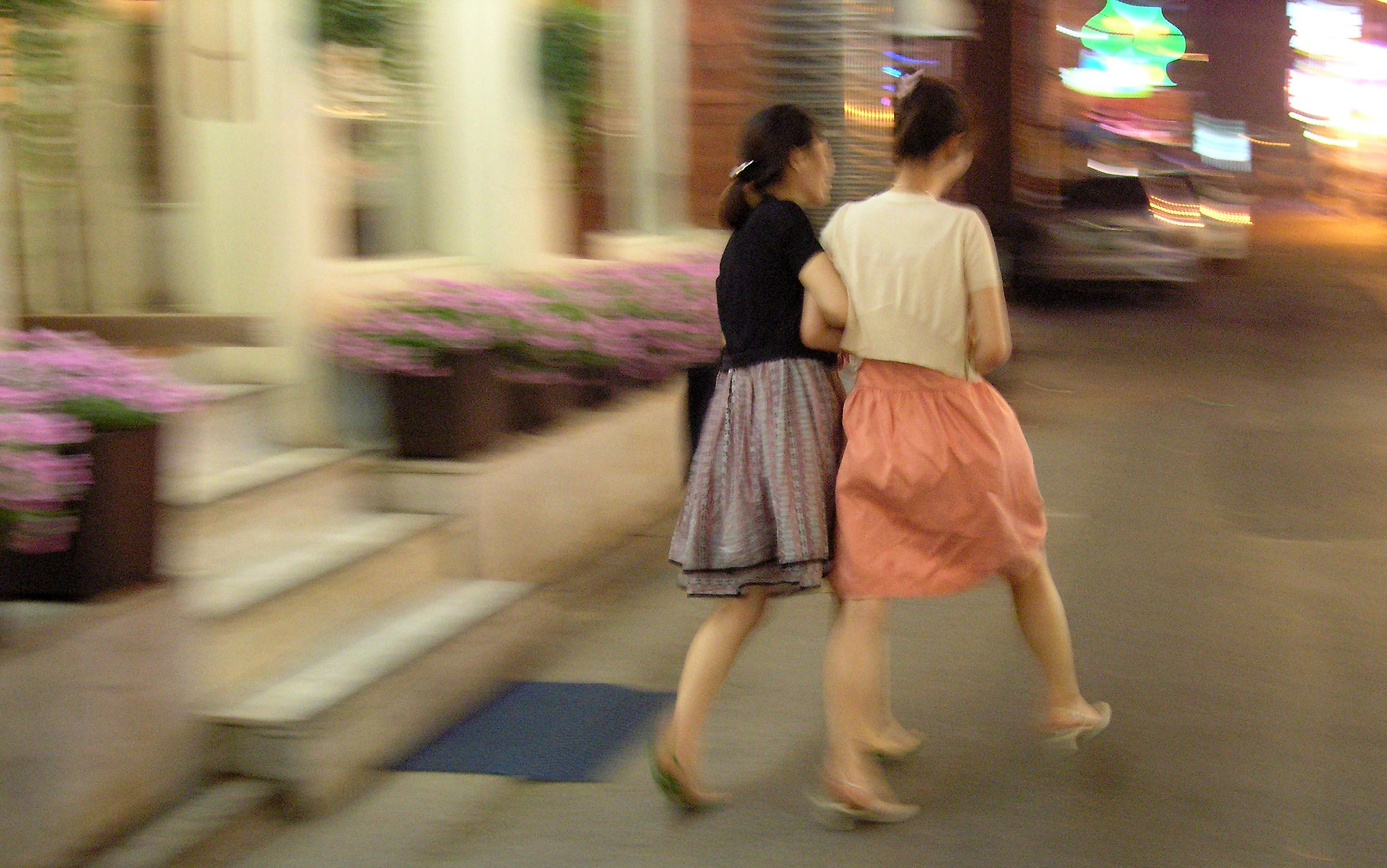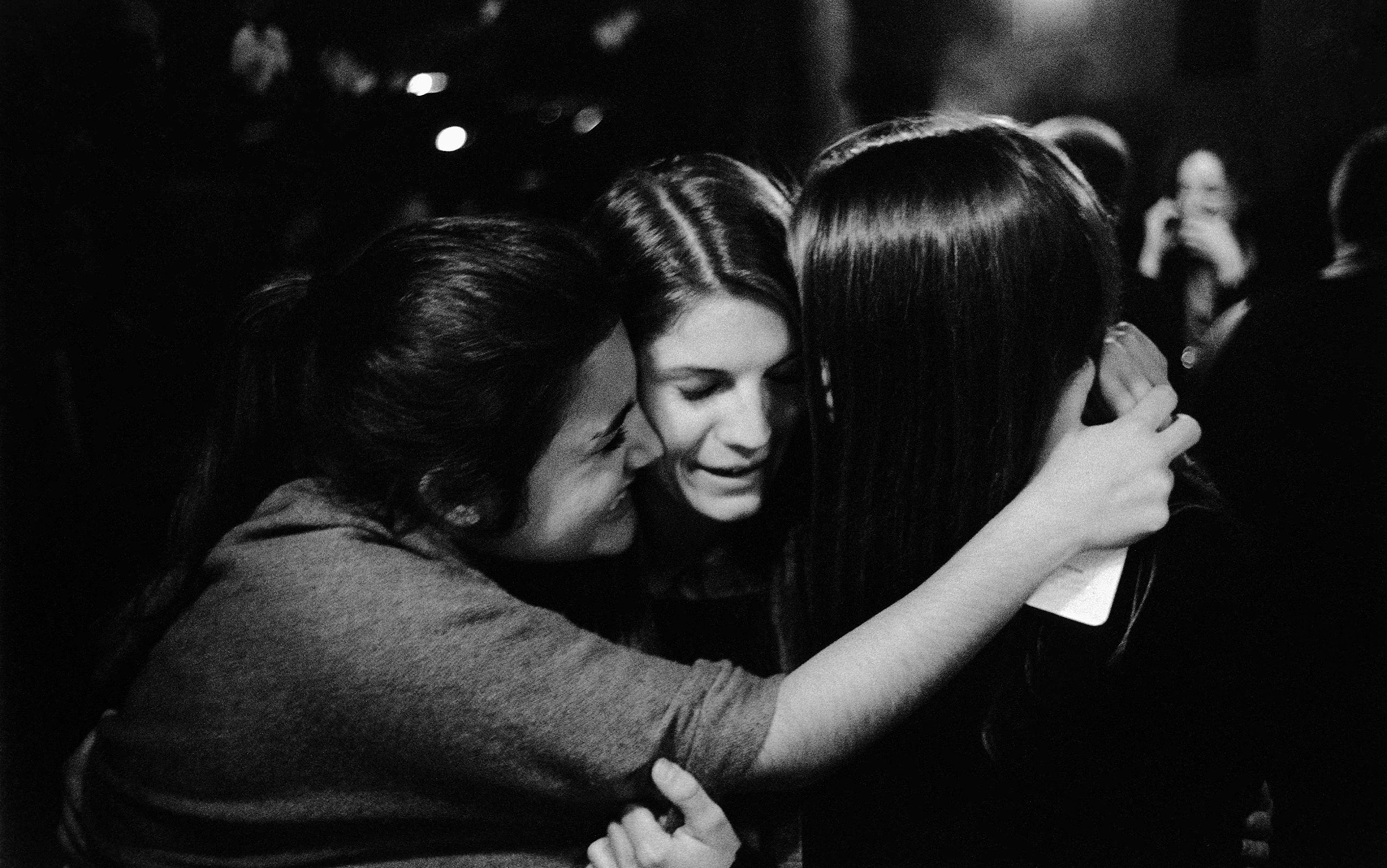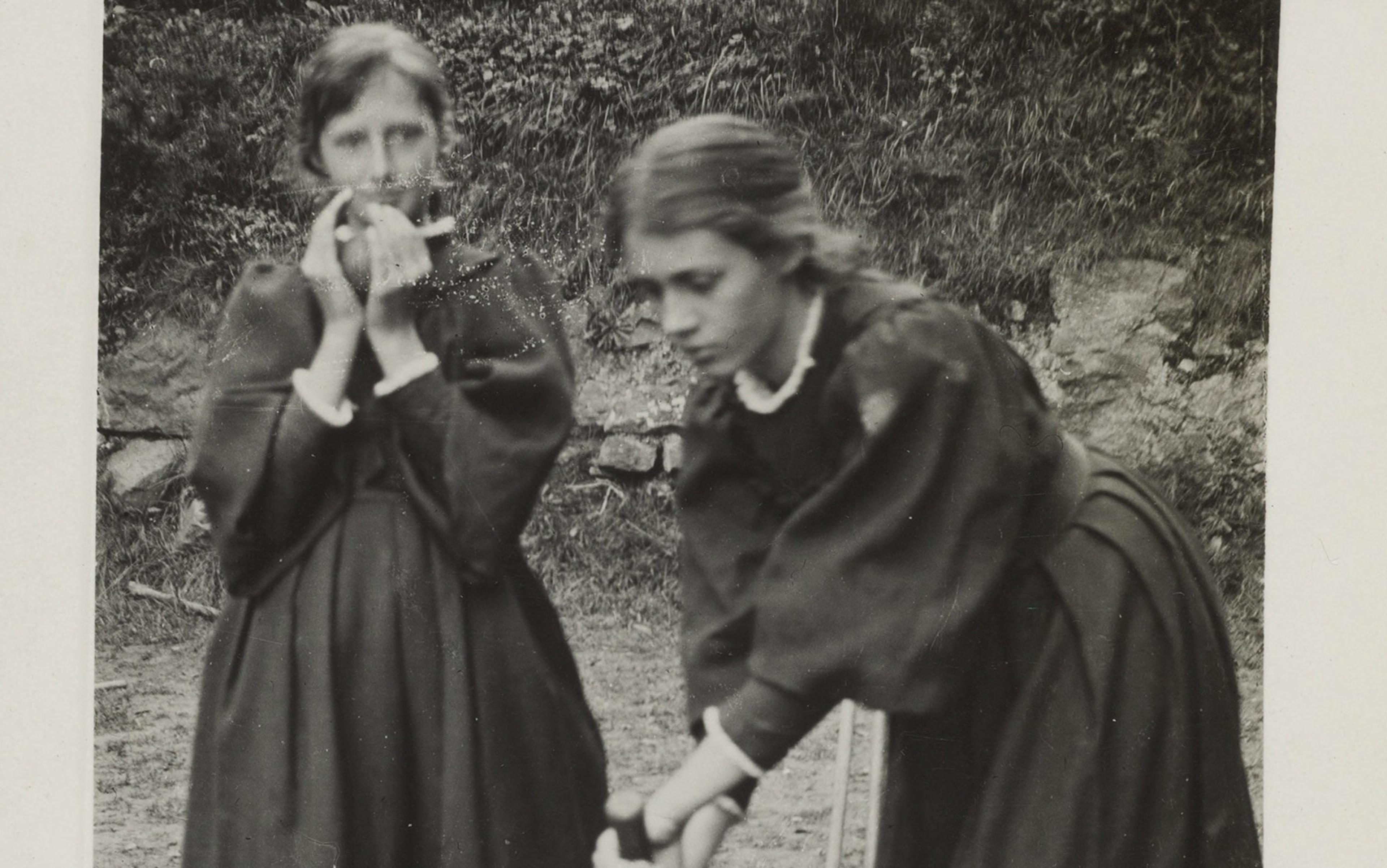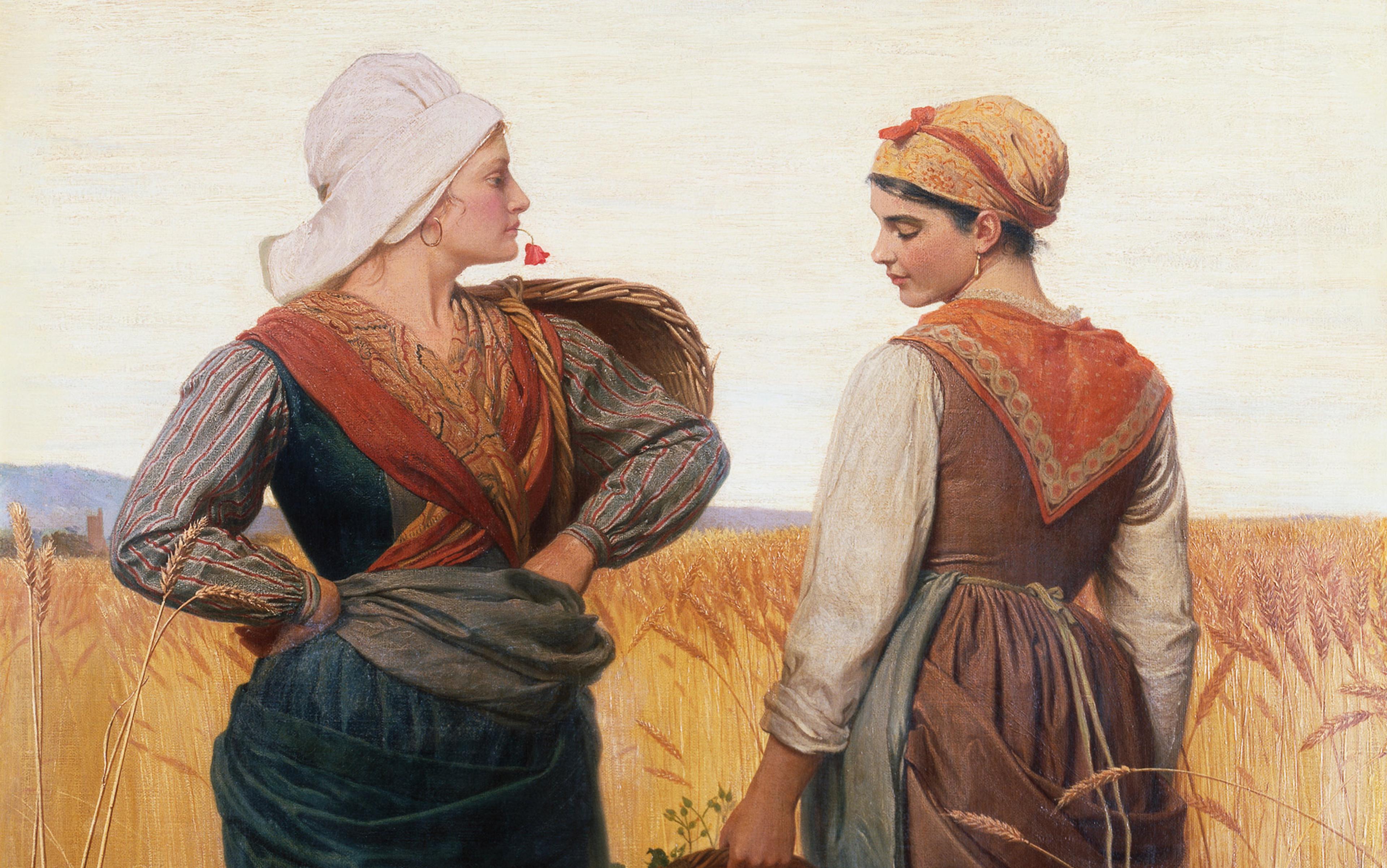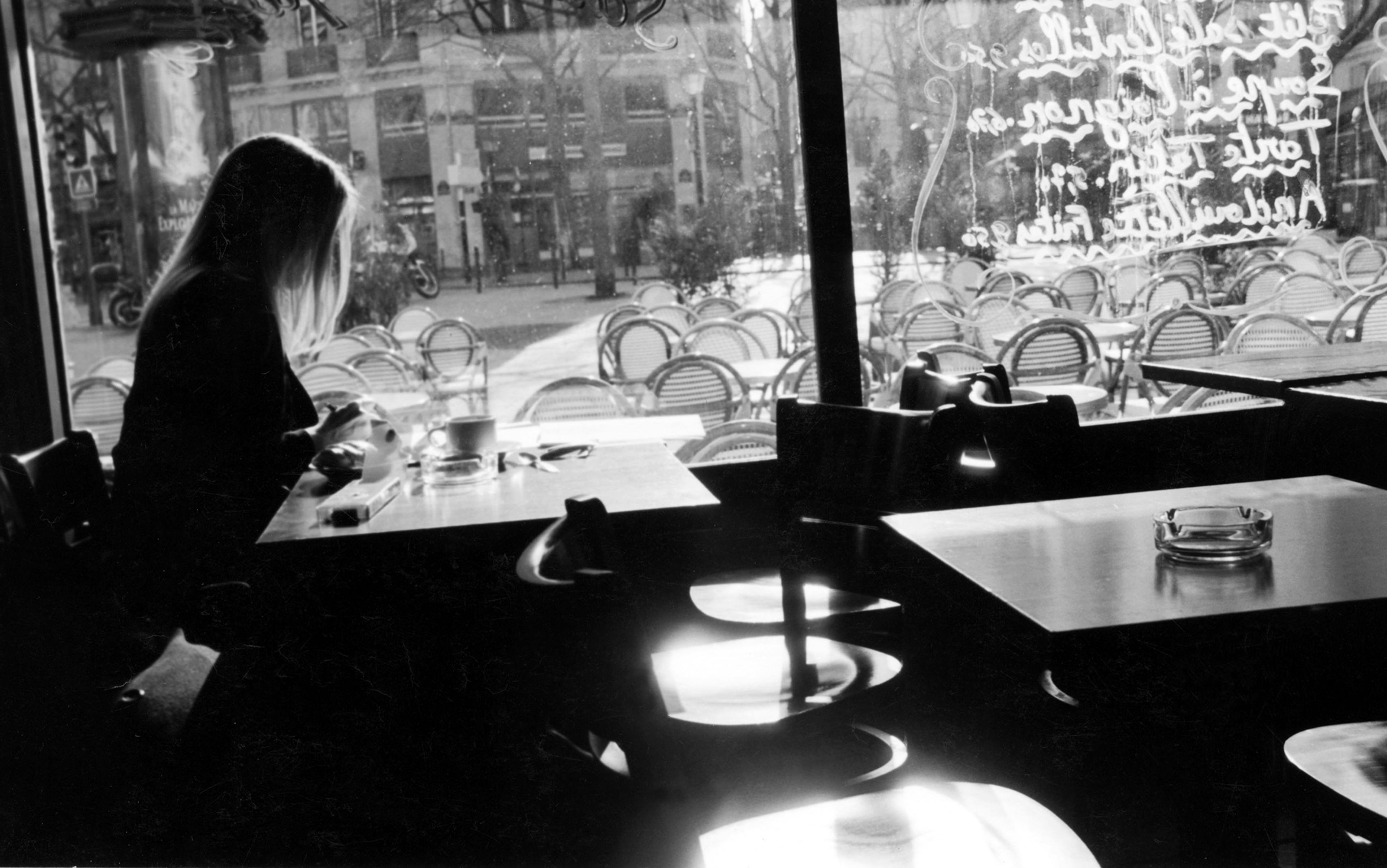A few years ago, a curator I know professionally invited me to Arizona to give a lecture. The talk would be in Phoenix and we would stay at her house in Tucson. The invitation made me nervous – not due to the public speaking, or the fact I was travelling to a part of the United States that I had not been to before, but because it would involve several two-hour car journeys with somebody I didn’t know well.
Living my whole adult life in major cities – London, New York, and now Paris – I rarely get into a car, apart from short cab rides. Moreover, I hardly ever spend two hours in the company of someone without being able to leave. My fellow curator’s professional interests are quite different – she is a scholar of American mid-20th-century photography, and my specialism leans more toward contemporary art. So, as harsh as this sounds, I inwardly sighed with relief when she told me that she was recently divorced. Love, kids, hurt, rejection, self-preservation and future desires are universal subjects I can talk about with anyone.
I think about those two-hour drives now, and consider how lucky we were to have that time together. I can’t recall exactly what we talked about but – to paraphrase Carol Shields in her novel Unless (2002) – when we talked, we never thought about the aboutness of talk; we just talked. In that confined space, driving along a completely unmemorable highway, a friendship was formed.
This ease is something I share with most of my female friends. I would say it’s different from the way I connect to my male friends. The talking is what makes it different. Again, Shields’s novels are excellent on the importance of female friends, without making them the centre story or narrative arc. In Unless, the protagonist’s husband asks her what she talks about during a regular friends’ meet-up. She replies: ‘It’s too rich to describe, and too uneven. Chit-chat, some people call it.’ The term ‘chit-chat’ reduces the talking between female friends to something superficial and unimportant, and sometimes it can be, but other times it is deeply profound and essential. It’s hard to put into words a process of sharing that can meander between desires, vanities, failures and destinies.
Aristotle claimed that friends are central to a life that is fulfilled, happy and well lived. He dedicated Books VIII and IX of his Ethics to the subject of friendship, although it’s pretty certain that he wasn’t considering female friendships when he was writing. He situates three different types of friendships based around the moral virtues of goodness, pleasure and advantage. It is only when all three are in operation that ‘good will’ is achieved and a proper, deep friendship is formed.
‘Good will’ is a reciprocal feeling of wanting what is good for one another through shared values. But Aristotle’s writing makes two quite sweeping statements. First, he claims, if there is an imbalance in this desire of goodness for one another, then the friendship is unsustainable. Yet it is this imbalance that seems to dominate representations of female friendships – especially in film – where one is led to believe that women find it impossible to be friends on a foundation of mutual respect. Second, Aristotle claims that the number of people with whom one can sustain a perfectly balanced friendship based on the identified three values is quite small.
Examples of this imbalance and of bad friendships between women are seemingly endless, and confrontation and pitting women against one another is a plot device that rarely occurs in ‘bromances’ between male friends. In her autobiographical book Testament of Friendship (1940), Vera Brittain wrote: ‘From the days of Homer the friendships of men have enjoyed glory and acclamation, but the friendships of women … have usually been not merely unsung but mocked, belittled and falsely interpreted.’ Perhaps Brittain was referring to 1930s films where women fought each other over the returning soldier. Indeed, films such as The Road to Glory (1936) and A Farewell to Arms (1932) suggest a widespread belief that women are unable to have friendships.
In any case, screen representations of women have long been unrealistic, even if subject of great interest, fear and attraction. In response, the 1980s saw the appearance of what is now known as the Bechdel test, which asks how often two women in a film talk of subjects other than men. Yet women fighting one another continues as a staple of film and TV – witness the confrontations, petty jealousies and fall-outs (and then making-ups) in the TV series Girls (2012-17) or Big Little Lies (2017-). Films such as Beaches (1988), Mean Girls (2004) and Clueless (1995) also rely on this filmic device.
In addition to these familiar storylines of fighting friends, there are also representations where the friendship turns to love and moves into something completely different, as in Heavenly Creatures (1994), Wild Things (1998), Blue Is the Warmest Colour (2013) and The Favourite (2018). There are phoney views of ‘sisterhood’, as in Thelma and Louise (1991). There are others that use this treacle ‘girlfriend’ motif, but still rely on a rift in their storylines, as in 9 to 5 (1980), The First Wives Club (1996), Sex and the City (1998-2004), Pitch Perfect (2012), Bridesmaids (2011) and Girls Trip (2017). It is perhaps only in the fantasyland of the US sitcom Friends (1994-2004) that the women rarely fall out with one another or compare and compete. All in all, film and TV is a pretty strange landscape in which to find realistic representations of female friendships.
I lived in New York for nearly eight years; recently, a good friend said he would throw me a party for my upcoming 50th birthday. With Aristotle’s ideas on friendship in mind, I thought I couldn’t possibly have enough real friends to invite, and certainly none of the sitcom variety: I have never been one for tribal gatherings or the herd mentality, and am more comfortable one-to-one or in a small group. So I was amazed how quickly my invite list filled to include 30 people (the maximum for my friend’s apartment). Aristotle held that the number of people who can sustain his perfect sort of friendship is small. It certainly makes demands on both sides; as William Rawlins, professor of interpersonal communication at Ohio University, said: ‘How do you do that in a way that respects the contingencies of each other’s lives while also trying to build in, if not a regular practice, the expectation that we’re going to see each other? It can be a challenging needle to thread.’
Others have similarly claimed that friendship comes in small numbers. The British anthropologist Robin Dunbar even put a figure to it – 150, aka Dunbar’s number, or the total number of stable social relationships a person can have (for his purposes, these are ‘people you would not feel embarrassed about joining uninvited for a drink if you happened to bump into them in a bar’; he put the number of intimate friends at only around five). With mobility becoming easier and friends living all over the world, psychological studies have looked at how the concept of friendship has changed, with social networking affecting the intensity of writing between friends and the superficiality of online friendships.
In the wake of #MeToo and on the shifting sands that led to it, there has been increased representation of female friendship in both film and literature. In The Atlantic magazine, Julie Beck writes: ‘As people get married later, and the ranks of single women rise, more and more books and television shows have been exploring friendship dynamics.’ So we see a few more genuine friendships portrayed that don’t rely on a sense of continued obligation, or controlled caretaking and withholding, and while that might not make for very dramatic plotlines, these female friendships show a mutual respect and liking, without any confrontation. Such representations are noticeably rarer but an early example is Rita, Sue and Bob Too (1987). More recently, the film The Help (2011), the TV series Broad City (2014-19) and the teen film Booksmart (2019) – which does feature one major argument – all have healthy, low-key, respectful, considerate female friendships at the core of their narratives.
In literature, the female friendships in Shields’s novels stand out as consistently showing women being supportive and kind to one another. In Unless, she writes:
It’s curious how friends get let out of novels, but I can see how it happens. Blame it on Hemingway, blame it on Conrad, blame even Edith Wharton, but the modernist tradition has set the individual, the conflicted self, up against the world. Parents (loving or negligent) are admitted to fiction, and siblings (weak, envious, self-destructive) have a role. But the non-presence of friends is almost a convention – there seems no room for friends in a narrative already cluttered with event and the tortuous vibrations of the inner person.
So while misrepresented friends feature heavily in film, they are indeed rarer in novels. But Shields’s view of them being left out of narratives in favour of self-study can lead us back to Aristotle. He argues that the triumph of the values of mutual reciprocation that he identifies as needed for friendship depends on the idea that a friend is ‘another self’, someone whom you love and like, as you love and like yourself. Here is where it gets interesting. Self-loathing and insecurity (as opposed to self-love) are key to two of the most popular stories of friendship in recent years: the Neapolitan Novels quartet (2012-15) by Elena Ferrante and the TV comedy drama Fleabag (2016-19) by Phoebe Waller-Bridge. As ever, it’s the darker sides of friendships that tend to dominate and in turn have a higher level of popularity.
Obsession, in the case of Ferrante, and transgression, in Waller-Bridge, are no grounds for a genuine friendship
These two authors show the fallibility of humans and what effects female friendships can have on the self. The friendships in these stories are in fact a device through which to explore the deeper recesses of the female psyche and show how they affect intimate, interior and inward emotions, or what Shields calls the ‘tortuous vibrations of the inner person’. In both Ferrante’s novels and Waller-Bridge’s drama, based on her earlier one-woman stage show, obsession and transgression within female friendships illustrate not togetherness but loneliness. It is this twist of using the friendship for self-examination that makes both stories so successful and relatable, as the emotions they stress are those many of us have felt at some point in our lives.
In both stories, we get only one side of the story, and what both authors do so brilliantly is to question whether these relationships are really friendships. After all, obsession, in the case of the Ferrante novels, and transgression, in Waller-Bridge, are no grounds for a genuine friendship.
The four Neapolitan Novels orbit the relationship between Elena and Lila, with Elena narrating. This literary device allows direct insight into one woman’s inner world, whereas that of the other remains opaque. The reader can only speculate on the intent behind Lila’s actions, which are violently cruel and manipulative from the outset, born of an almost incontrollable jealously that Elena has the opportunity to continue her studies while Lila is denied it. Elena is obsessed with the unfathomable Lila whom she worships and detests in equal measure as their relationship shifts from childhood to old age. Lila is her shadow and she looms over Elena’s life with a constant menace, needling away at Elena’s insecurities (Lila seems to have almost paranormal power to know exactly what they are). Elena’s relentless pursuit for acceptance from a woman who appears to have no likeable traits verges on the psychotic. This is in no way a friendship by Aristotle’s measure: ‘Those who wish good things to their friends for the sake of the latter are friends most of all, because they do so because of their friends themselves, and not coincidentally.’
Lila is a bully who uses Elena for her own purposes throughout. The jealousies – intellectual and sexual – on both sides are insidious and self-destructive. There seems to be nothing in their relationship that verges on respect for one another, nor do they even seem to like each other. At 17, Lila sleeps with Nino – a local boy who has moved away due to his father’s philandering – while the girls are on holiday together. She does so knowing that Elena is in love with Nino, even if this has never been voiced. At this point, Lila is also unhappily married. This action has huge ramifications on both women’s lives, and indeed Nino’s presence, at a crucial time later in the story, leads to the loss of Lila’s daughter and the inevitable disintegration of any kind of relationship between the two women. Throughout these novels, the reader is left wondering why Elena doesn’t break away completely and free herself from such a toxic relationship if it makes her feel so bad about herself.
It is only in the fourth novel, when both women are pregnant at the same time, that there are rare moments that resemble what could be considered a friendship: visits to the doctor together, and laughter. However, this doesn’t last long, and Lila soon reverts to her ruthless self, her looming presence threatening once more. Key to this book is loneliness – Elena observes Lila’s, and has to deal with her own when she is often left trapped with men who feel hard done by, seemingly unaware (or, more accurately, conditioned not to care) about her personal and professional agency. Although married once, a mistress to Nino for many years and the mother of three children, Elena’s loneliness reverberates throughout, and is perhaps why she clings to the idea of a friendship with Lila as a salve for it. Unlike the many mainstream examples mentioned previously, there is nothing formulaic about this relationship, and no happy ending.
Female-on-female obsession is not new, of course – just think of Daphne du Maurier’s novel Rebecca (1938). And while Elena’s obsession with Lila might be extreme, the theme has had a recent on-screen resurgence, for example in Killing Eve (2018-), the series based on the Villanelle novels (2014-16) by Luke Jennings and, like Fleabag, created for TV by Waller-Bridge.
Fleabag’s eponymous protagonist and narrator is driven by loneliness after the sudden death of her best friend, Boo. Yet this friendship seems more of a background subplot, while in most episodes Fleabag’s relationships with her stepmother and her sister take centre-stage. By the close of the series, however, viewers realise that the friendship is everything – and its tragic end holds the key to Fleabag’s insecurity, sexual availability, erratic behaviour and inclination to hurt those around her and herself. Her friendship with Boo had been so believable, so genuinely warm, respectful and fun, that Fleabag’s betrayal, once revealed, is appalling.
Kindness – where both characters are equally devoted to one another – is so rarely represented in female friendships that Fleabag’s transgression cuts deep. She messed up – big time – and can never make amends. Fleabag wears her emotions and her flaws on her sleeve, and shows that we truly hurt the ones we love. Perhaps many of us have done something like this, to some degree, to someone close. We are all Fleabags. The device of the friendship is a route into the character, a way of revealing Fleabag’s fragile sense of self as she bumbles through life, barely in control of her emotions.
There can be competitiveness and jealousy, transgression and guilt, but also genuine love
The series’ popularity shows the deep need for fully formed female characters to take centre-stage, and reveals the importance of female friendship to women. Fleabag’s other relationships, for example with her family, are so tortured but her friendship with Boo seems (initially, at least) so pure. If you don’t have that with somebody, then you certainly strive for it, as the fear of loneliness is acute. Fleabag and Boo were friends because it made them both feel good, about each other and about themselves. This friendship seemed like the complete opposite of Elena and Lila’s, with their plotting, double-guessing and insecurities (even if Fleabag and Elena have similarly low self-esteem). In contrast, Boo and Fleabag nourished and complimented one another, and it’s hard to remember when we last saw that on primetime TV.
There is nothing ‘minor’ about these two stories of female friendship: they are sweeping, epic, and a welcome tonic in a digital age when ‘likes’ and online comments can be confused with intimacy. It is the theme of Kate Leaver’s book The Friendship Cure (2018) and Sherry Turkle’s work as the founding director of the MIT Initiative on Technology and Self. They tell us that friendship seems to be in something of a crisis. What the Neapolitan novels and Fleabag do is flip this pessimism to illustrate how precious female friendships are, how messy, complicated and vulnerable people can be, and how we must nurture and attend to our friends and ourselves, and indeed disregard those who don’t give the same back.
What makes both these examples of friendship resonate is their intimacy and vulnerability, not only between the two women, but within the main characters themselves. These women are flawed but honest. Their fallibility, loneliness and insecurity might not make them likeable, but they are totally relatable. In short, seeing ourselves reflected in fiction makes us feel less alone. And so it seems that the most compelling stories are not really about friendship at all, but about self-awareness, self-deception, loneliness and self-confidence (or its lack). These stories focus on female friendship to show that there can be competitiveness and jealousy, transgression and guilt, but also genuine love; the relationships between women can be acutely observant and thought-provoking guides to deep emotions of the self.
I am drawn to such narratives because, moving countries so much, I have to make new friends each time. Moving makes me reassess myself – it’s not a reinvention necessarily but it’s certainly a recalibration. I have to look inwards, and it is my friends who help me do that. Moving highlights my insecurities and inadequacies, and my friends all have these things too: I don’t always have ‘self-love’ and nor do my friends. Aristotle’s demand for the virtues of goodness in a person and his friends seems totally unachievable to me, but I think what we can strive for is his notion of ‘good will’ towards each other, even if we don’t always view ourselves in the same high regard.
